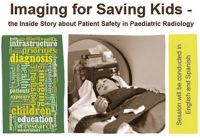The European Society of Radiology (ESR) and the European Respiratory Society (ERS) have issued a joint report recommending the use of low-dose computed tomography (CT) to reduce mortality from lung cancer, which is the most frequently fatal cancer. The disease causes 1.37 million deaths per year, representing 18 percent of all cancer deaths worldwide.
Annual low dose CT has shown a survival benefit in screening individuals at high risk for lung cancer, according to the paper published simultaneously in the two societies' scientific journals, European Radiology and European Respiratory Journal.
“A major study from the U.S. has revealed a significant decrease in lung cancer mortality as a result of a screening programme using computed tomography (CT) of the lung," said the first author of the paper, Hans-Ulrich Kauczor, from the University Heidelberg and the German Center for Lung Research. "It is our duty to provide recommendations for the implementation of standardised high-quality screening programmes to help reduce lung cancer deaths in Europe.”
Lung cancer, the report notes, can be treated most effectively in the early stages. It is estimated that over 80 percent of lung cancers could be cured if detected at an early stage. However, most patients are diagnosed at an advanced, and thus non-curable, disease stage. Since the risk factors (smoking, occupational exposure to substances like fine dust or asbestos, and age) are well known, early detection in high-risk individuals might help to reduce death from lung cancer. Survival rate decreases significantly when the disease has reached an advanced stage.
The ESR/ERS paper recommends structural and quality standards for future programmes, whether they are part of a clinical trial or routine clinical practice. A number of requirements for such programmes (which must be adjusted to the regional infrastructure and healthcare system) are listed in the report, including standardised operating procedures for low-dose image acquisition, inclusion and exclusion criteria, expectation management, and smoking cessation programmes.
The paper also recommends that risk models should be included and effective radiation dose reduced in order to increase the quality, outcome, and cost-effectiveness of lung cancer screening. Additionally, a central registry including a biobank and an image bank, preferably on a European level, should be established.
While European networking already exists on an academic level, Kauczor says it is now up to political leaders to provide the supranational framework to implement high-quality national and European programmes and prove the benefits for the general population and patients.
Source: European Society of Radiology & European Respiratory Society
Image Credit: Wikimedia Commons
Annual low dose CT has shown a survival benefit in screening individuals at high risk for lung cancer, according to the paper published simultaneously in the two societies' scientific journals, European Radiology and European Respiratory Journal.
“A major study from the U.S. has revealed a significant decrease in lung cancer mortality as a result of a screening programme using computed tomography (CT) of the lung," said the first author of the paper, Hans-Ulrich Kauczor, from the University Heidelberg and the German Center for Lung Research. "It is our duty to provide recommendations for the implementation of standardised high-quality screening programmes to help reduce lung cancer deaths in Europe.”
Lung cancer, the report notes, can be treated most effectively in the early stages. It is estimated that over 80 percent of lung cancers could be cured if detected at an early stage. However, most patients are diagnosed at an advanced, and thus non-curable, disease stage. Since the risk factors (smoking, occupational exposure to substances like fine dust or asbestos, and age) are well known, early detection in high-risk individuals might help to reduce death from lung cancer. Survival rate decreases significantly when the disease has reached an advanced stage.
The ESR/ERS paper recommends structural and quality standards for future programmes, whether they are part of a clinical trial or routine clinical practice. A number of requirements for such programmes (which must be adjusted to the regional infrastructure and healthcare system) are listed in the report, including standardised operating procedures for low-dose image acquisition, inclusion and exclusion criteria, expectation management, and smoking cessation programmes.
The paper also recommends that risk models should be included and effective radiation dose reduced in order to increase the quality, outcome, and cost-effectiveness of lung cancer screening. Additionally, a central registry including a biobank and an image bank, preferably on a European level, should be established.
While European networking already exists on an academic level, Kauczor says it is now up to political leaders to provide the supranational framework to implement high-quality national and European programmes and prove the benefits for the general population and patients.
Source: European Society of Radiology & European Respiratory Society
Image Credit: Wikimedia Commons
References:
Kauczor HU, Bonomo L, Gaga M, Nackaerts K, Peled N, Prokop M,
Remy-Jardin M, von Stackelberg O, Sculier JP, on behalf of the European
Society of Radiology and the European Respiratory Society (2015) ESR/ERS white paper on lung cancer screening.
Eur Radiol (epub) DOI 10.1007/s00330-015-3697-0
Eur Resp J (epub) DOI 10.1183/09031936.00033015
Eur Radiol (epub) DOI 10.1007/s00330-015-3697-0
Eur Resp J (epub) DOI 10.1183/09031936.00033015
Latest Articles
healthmanagement, computed tomography, CT, smoking, ESR, ERS
A joint publication by the European Society of Radiology and the European Respiratory Society recommends the use of low-dose computed tomography to reduce lung cancer deaths.



























